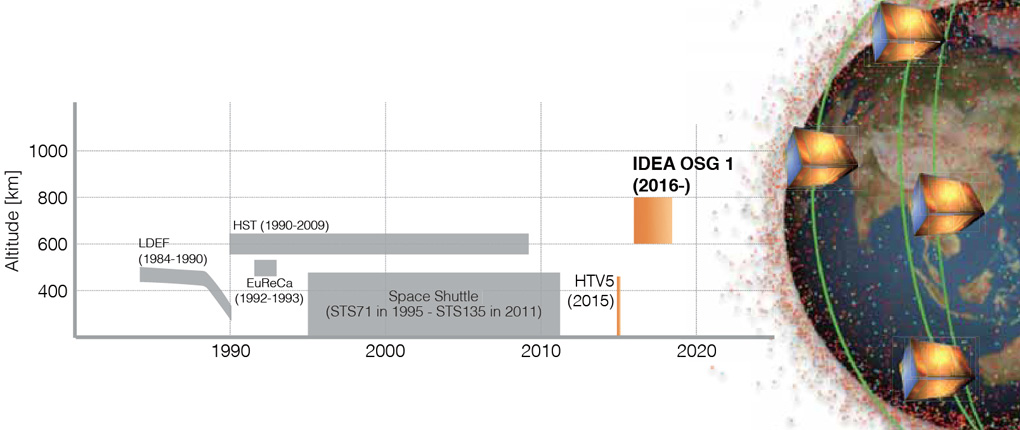3.The Threat of Space Debris

The amount of space debris has grown explosively in the past five years, to the point that there are now over 16,000 pieces of debris of at least 10 cm in size. Specifically, the approximately 3,000 pieces of debris generated in a Chinese anti-satellite missile test in 2007 have orbits that intersect that of the international space station, thereby threatening the safety of the astronauts on board. Such debris travels at a speed of 8 km per second, and hypervelocity collision testing shows that even a piece of debris smaller than 10 cm in size has the destructive energy to destroy a satellite.
Moreover, there are concerns over fragments from collisions between pieces of space debris causing further collisions, resulting in a chain reaction. This collisional cascade is known as the “Kessler Syndrome,” and is a scenario in which further collisions cannot be halted if the spatial density of debris exceeds a critical level.
The incident involving the American communications satellite Iridium 33 and the defunct Russian military communications satellite Kosmos-2251 is one example of a confirmed collision between a working satellite and debris. There are also numerous examples in which suspected debris collisions have occurred, such as failures that can be attributable to debris collisions, and pieces of debris that have suddenly changed orbit. Additionally, numerous debris impact scars have been discovered when examining the surfaces of spacecraft that have returned to earth.
